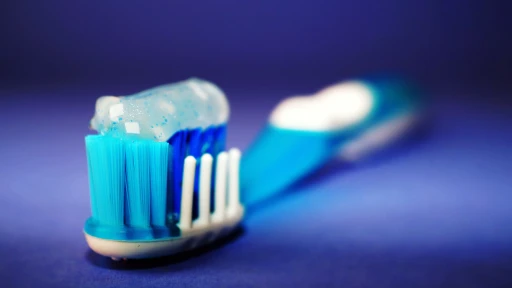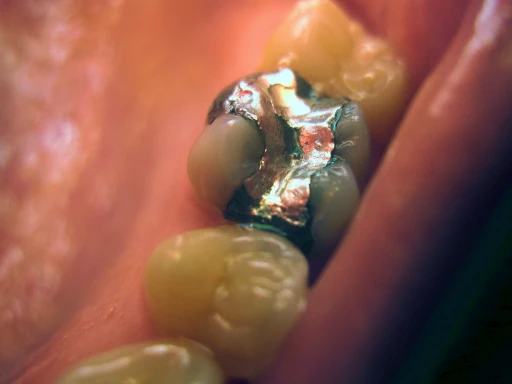Understanding Crowns, Onlays & Inlays for Brooklyn Patients
Understanding Crowns, Onlays & Inlays for Brooklyn Patients


Restoring Back Teeth – Crowns, Onlays and Inlays Explained
Restoring Back Teeth – Crowns, Onlays and Inlays Explained




The cusp is the pointed or rounded projection on the chewing surface of the tooth. Molars typically have four cusps as shown by the four purple asterisks in the top image. Bicuspids, also called pre-molars, typically have two cusps as shown by the two blue asterisks in the top image. When we refer to crowns, onlays, and inlays, we are referring to whether we need to restore the cusp of the tooth, and if so, whether it is all of the cusps or some of the cusps. When a tooth has been severely weakened or fractured, we will usually place a crown, which covers all of the cusps. In the photo on the right, the closest tooth requires a crown to made in the lab and the result is shown in the bottom picture.
When a tooth has one or more cusps that are weakened or fractured but other cusps that are still strong, we can elect to do an onlay. An onlay can cover one or more cusps while retaining some of the tooth above the gumline. In the example on the right, the lower left cusp for the middle tooth was determined to be too weak. It was capped, but the remaining three cusps were healthy so they were left untouched. The porcelain restoration was made in the lab and the final result is in the bottom image.
When the cusps of the tooth are all healthy and structurally sound, we can elect to restore the surrounding structure but leave the cusps intact. This is called an inlay as shown by the tooth on the far right. The amalgam restoration needed to be replaced and it was restored with a porcelain inlay that was made in the lab. The final result is shown in the bottom image.
Book Your Dental Appointment Online with Ease
Book Your Dental Appointment Online with Ease
Book Your Dental Appointment Online with Ease
Book Your Dental Appointment Online with Ease
Your smile's best friends,
Our doctors
Your smile's best friends, Our doctors
About Dr. Alex
Dr. Alexander Rubinshtein has been practicing dentistry for over 25 years and has a thriving patient following. He received his DDS from NYU school of Dentistry and was a member of the honorary society. Dr Rubinshtein is board member of ALD | Academy of Laser Dentistry & ADA. Dr. Alex deploys the latest advances in dentistry and business practice enabling him to treat his patients and provide them with exceptional services. His main focus is on oral surgery, implant restoration and laser assisted dentistry. Dr. Rubinshtein is one of the 1.8% of dentist in America offering the latest Laser Dentistry. Laser technology provides unmatched benefits for our patients who seek no drilling, no incisions & no numbness in most dental procedures. Dr.Rubinshtein works with every type of a patient, if you are nervous about visiting the dentist for any reason, he is able to make your experience as painless & pleasant as possible. Please view our testimonials.

Alexander Rubinshtein
Laser Dentist
About Dr. Alex
Dr. Alexander Rubinshtein has been practicing dentistry for over 25 years and has a thriving patient following. He received his DDS from NYU school of Dentistry and was a member of the honorary society. Dr Rubinshtein is board member of ALD | Academy of Laser Dentistry & ADA. Dr. Alex deploys the latest advances in dentistry and business practice enabling him to treat his patients and provide them with exceptional services. His main focus is on oral surgery, implant restoration and laser assisted dentistry. Dr. Rubinshtein is one of the 1.8% of dentist in America offering the latest Laser Dentistry. Laser technology provides unmatched benefits for our patients who seek no drilling, no incisions & no numbness in most dental procedures. Dr.Rubinshtein works with every type of a patient, if you are nervous about visiting the dentist for any reason, he is able to make your experience as painless & pleasant as possible. Please view our testimonials.

Alexander Rubinshtein
Laser Dentist
About Dr. Alex
Dr. Alexander Rubinshtein has been practicing dentistry for over 25 years and has a thriving patient following. He received his DDS from NYU school of Dentistry and was a member of the honorary society. Dr Rubinshtein is board member of ALD | Academy of Laser Dentistry & ADA. Dr. Alex deploys the latest advances in dentistry and business practice enabling him to treat his patients and provide them with exceptional services. His main focus is on oral surgery, implant restoration and laser assisted dentistry. Dr. Rubinshtein is one of the 1.8% of dentist in America offering the latest Laser Dentistry. Laser technology provides unmatched benefits for our patients who seek no drilling, no incisions & no numbness in most dental procedures. Dr.Rubinshtein works with every type of a patient, if you are nervous about visiting the dentist for any reason, he is able to make your experience as painless & pleasant as possible. Please view our testimonials.

Alexander Rubinshtein
Laser Dentist
About Dr. Alex
Dr. Alexander Rubinshtein has been practicing dentistry for over 25 years and has a thriving patient following. He received his DDS from NYU school of Dentistry and was a member of the honorary society. Dr Rubinshtein is board member of ALD | Academy of Laser Dentistry & ADA. Dr. Alex deploys the latest advances in dentistry and business practice enabling him to treat his patients and provide them with exceptional services. His main focus is on oral surgery, implant restoration and laser assisted dentistry. Dr. Rubinshtein is one of the 1.8% of dentist in America offering the latest Laser Dentistry. Laser technology provides unmatched benefits for our patients who seek no drilling, no incisions & no numbness in most dental procedures. Dr.Rubinshtein works with every type of a patient, if you are nervous about visiting the dentist for any reason, he is able to make your experience as painless & pleasant as possible. Please view our testimonials.

Alexander Rubinshtein
Laser Dentist
About Dr. Marina
Dr. Marina Rubinshtein “The Doctor with magical hands” – This is how patients refer to Dr. Rubinshtein. She is an experienced and talented dentist, having spent over 24 years in a private practice; specializing in general, cosmetic and restorative dentistry. She received her DDS from NYU school of Dentistry and was a member of the honorary society. Dr. Marina is also a member of the Academy of General Dentistry and the Academy of Cosmetic dentistry. She is a member of American Academy of Cosmetic Dentistry & AGD. Dr. Marina Rubinshtein is one of NY’s most recognized and acclaimed cosmetic dentist for the upper echelon, working with celebrities from entertainment, media & acting. Her skills and artistic vision in cosmetic dentistry is incomparable. Dr. Rubinshtein provides her patients with natural, beautiful & stunning results unrivaled by anyone else. Dr Marina always created new ways to benefit her patients by being on a cutting edge of cosmetic dentistry for many years creating the most artistic & beautiful smiles. Dr. Marina Rubinshtein lives by her motto, “A beautiful Smile is your path to a Bright Future!”

Marina Rubinshtein
Cosmetic Dentist
About Dr. Marina
Dr. Marina Rubinshtein “The Doctor with magical hands” – This is how patients refer to Dr. Rubinshtein. She is an experienced and talented dentist, having spent over 24 years in a private practice; specializing in general, cosmetic and restorative dentistry. She received her DDS from NYU school of Dentistry and was a member of the honorary society. Dr. Marina is also a member of the Academy of General Dentistry and the Academy of Cosmetic dentistry. She is a member of American Academy of Cosmetic Dentistry & AGD. Dr. Marina Rubinshtein is one of NY’s most recognized and acclaimed cosmetic dentist for the upper echelon, working with celebrities from entertainment, media & acting. Her skills and artistic vision in cosmetic dentistry is incomparable. Dr. Rubinshtein provides her patients with natural, beautiful & stunning results unrivaled by anyone else. Dr Marina always created new ways to benefit her patients by being on a cutting edge of cosmetic dentistry for many years creating the most artistic & beautiful smiles. Dr. Marina Rubinshtein lives by her motto, “A beautiful Smile is your path to a Bright Future!”

Marina Rubinshtein
Cosmetic Dentist
About Dr. Marina
Dr. Marina Rubinshtein “The Doctor with magical hands” – This is how patients refer to Dr. Rubinshtein. She is an experienced and talented dentist, having spent over 24 years in a private practice; specializing in general, cosmetic and restorative dentistry. She received her DDS from NYU school of Dentistry and was a member of the honorary society. Dr. Marina is also a member of the Academy of General Dentistry and the Academy of Cosmetic dentistry. She is a member of American Academy of Cosmetic Dentistry & AGD. Dr. Marina Rubinshtein is one of NY’s most recognized and acclaimed cosmetic dentist for the upper echelon, working with celebrities from entertainment, media & acting. Her skills and artistic vision in cosmetic dentistry is incomparable. Dr. Rubinshtein provides her patients with natural, beautiful & stunning results unrivaled by anyone else. Dr Marina always created new ways to benefit her patients by being on a cutting edge of cosmetic dentistry for many years creating the most artistic & beautiful smiles. Dr. Marina Rubinshtein lives by her motto, “A beautiful Smile is your path to a Bright Future!”

Marina Rubinshtein
Cosmetic Dentist
About Dr. Marina
Dr. Marina Rubinshtein “The Doctor with magical hands” – This is how patients refer to Dr. Rubinshtein. She is an experienced and talented dentist, having spent over 24 years in a private practice; specializing in general, cosmetic and restorative dentistry. She received her DDS from NYU school of Dentistry and was a member of the honorary society. Dr. Marina is also a member of the Academy of General Dentistry and the Academy of Cosmetic dentistry. She is a member of American Academy of Cosmetic Dentistry & AGD. Dr. Marina Rubinshtein is one of NY’s most recognized and acclaimed cosmetic dentist for the upper echelon, working with celebrities from entertainment, media & acting. Her skills and artistic vision in cosmetic dentistry is incomparable. Dr. Rubinshtein provides her patients with natural, beautiful & stunning results unrivaled by anyone else. Dr Marina always created new ways to benefit her patients by being on a cutting edge of cosmetic dentistry for many years creating the most artistic & beautiful smiles. Dr. Marina Rubinshtein lives by her motto, “A beautiful Smile is your path to a Bright Future!”

Marina Rubinshtein
Cosmetic Dentist
About Dr. Daniel
Dr. Daniel Rubinshtein has graduated from the prestigious Yale University, where he did his general practice residency. Dr. Rubinshtein also is a graduate of New York University College of Dentistry where he received his doctor of dental surgery degree. At NYUCD Dr. Rubinshtein was a member of the Aesthetic Honors program where he displayed his artistic and keen eye for beauty. He won the Empire State Academy of Aesthetic Dentistry first place for his smile makeover and placed among the top at the national American Academy of Cosmetic Dentistry Conference. Dr. Rubinshtein’s desire to help others who are less fortunate has been apparent in his involvement with many charities from oral cancer to feeding the homeless. He also went on several dental outreaches that served under privileged communities throughout the country. Dr. Daniel Rubinshtein is excited to be back in Bensonhurst where he grew up, and help people in his community.

Daniel Rubinshtein
Cosmetic Dentist
About Dr. Daniel
Dr. Daniel Rubinshtein has graduated from the prestigious Yale University, where he did his general practice residency. Dr. Rubinshtein also is a graduate of New York University College of Dentistry where he received his doctor of dental surgery degree. At NYUCD Dr. Rubinshtein was a member of the Aesthetic Honors program where he displayed his artistic and keen eye for beauty. He won the Empire State Academy of Aesthetic Dentistry first place for his smile makeover and placed among the top at the national American Academy of Cosmetic Dentistry Conference. Dr. Rubinshtein’s desire to help others who are less fortunate has been apparent in his involvement with many charities from oral cancer to feeding the homeless. He also went on several dental outreaches that served under privileged communities throughout the country. Dr. Daniel Rubinshtein is excited to be back in Bensonhurst where he grew up, and help people in his community.

Daniel Rubinshtein
Cosmetic Dentist
About Dr. Daniel
Dr. Daniel Rubinshtein has graduated from the prestigious Yale University, where he did his general practice residency. Dr. Rubinshtein also is a graduate of New York University College of Dentistry where he received his doctor of dental surgery degree. At NYUCD Dr. Rubinshtein was a member of the Aesthetic Honors program where he displayed his artistic and keen eye for beauty. He won the Empire State Academy of Aesthetic Dentistry first place for his smile makeover and placed among the top at the national American Academy of Cosmetic Dentistry Conference. Dr. Rubinshtein’s desire to help others who are less fortunate has been apparent in his involvement with many charities from oral cancer to feeding the homeless. He also went on several dental outreaches that served under privileged communities throughout the country. Dr. Daniel Rubinshtein is excited to be back in Bensonhurst where he grew up, and help people in his community.

Daniel Rubinshtein
Cosmetic Dentist
About Dr. Daniel
Dr. Daniel Rubinshtein has graduated from the prestigious Yale University, where he did his general practice residency. Dr. Rubinshtein also is a graduate of New York University College of Dentistry where he received his doctor of dental surgery degree. At NYUCD Dr. Rubinshtein was a member of the Aesthetic Honors program where he displayed his artistic and keen eye for beauty. He won the Empire State Academy of Aesthetic Dentistry first place for his smile makeover and placed among the top at the national American Academy of Cosmetic Dentistry Conference. Dr. Rubinshtein’s desire to help others who are less fortunate has been apparent in his involvement with many charities from oral cancer to feeding the homeless. He also went on several dental outreaches that served under privileged communities throughout the country. Dr. Daniel Rubinshtein is excited to be back in Bensonhurst where he grew up, and help people in his community.

Daniel Rubinshtein
Cosmetic Dentist
About Dr. Geoff
Born and raised in New York, Dr. Rubinshtein completed his Doctorate of Dental Surgery at the prestigious New York University College of Dentistry and advanced his education at their Post Graduate Program in Periodontics. As a board certified periodontist for the community and those traveling from around the world, he offers a unique and compassionate approach to each individual patient. Dr. Rubinshtein’s goal is to improve patients’ oral health and deliver a life changing smile that enhances your teeth as well as your self-confidence.

Geoffrey Rubinshtein
Periodontist
About Dr. Geoff
Born and raised in New York, Dr. Rubinshtein completed his Doctorate of Dental Surgery at the prestigious New York University College of Dentistry and advanced his education at their Post Graduate Program in Periodontics. As a board certified periodontist for the community and those traveling from around the world, he offers a unique and compassionate approach to each individual patient. Dr. Rubinshtein’s goal is to improve patients’ oral health and deliver a life changing smile that enhances your teeth as well as your self-confidence.

Geoffrey Rubinshtein
Periodontist
About Dr. Geoff
Born and raised in New York, Dr. Rubinshtein completed his Doctorate of Dental Surgery at the prestigious New York University College of Dentistry and advanced his education at their Post Graduate Program in Periodontics. As a board certified periodontist for the community and those traveling from around the world, he offers a unique and compassionate approach to each individual patient. Dr. Rubinshtein’s goal is to improve patients’ oral health and deliver a life changing smile that enhances your teeth as well as your self-confidence.

Geoffrey Rubinshtein
Periodontist
About Dr. Geoff
Born and raised in New York, Dr. Rubinshtein completed his Doctorate of Dental Surgery at the prestigious New York University College of Dentistry and advanced his education at their Post Graduate Program in Periodontics. As a board certified periodontist for the community and those traveling from around the world, he offers a unique and compassionate approach to each individual patient. Dr. Rubinshtein’s goal is to improve patients’ oral health and deliver a life changing smile that enhances your teeth as well as your self-confidence.

Geoffrey Rubinshtein
Periodontist

Contact
Dental Services

Contact
Dental Services

Contact
Dental Services

Contact
Dental Services


